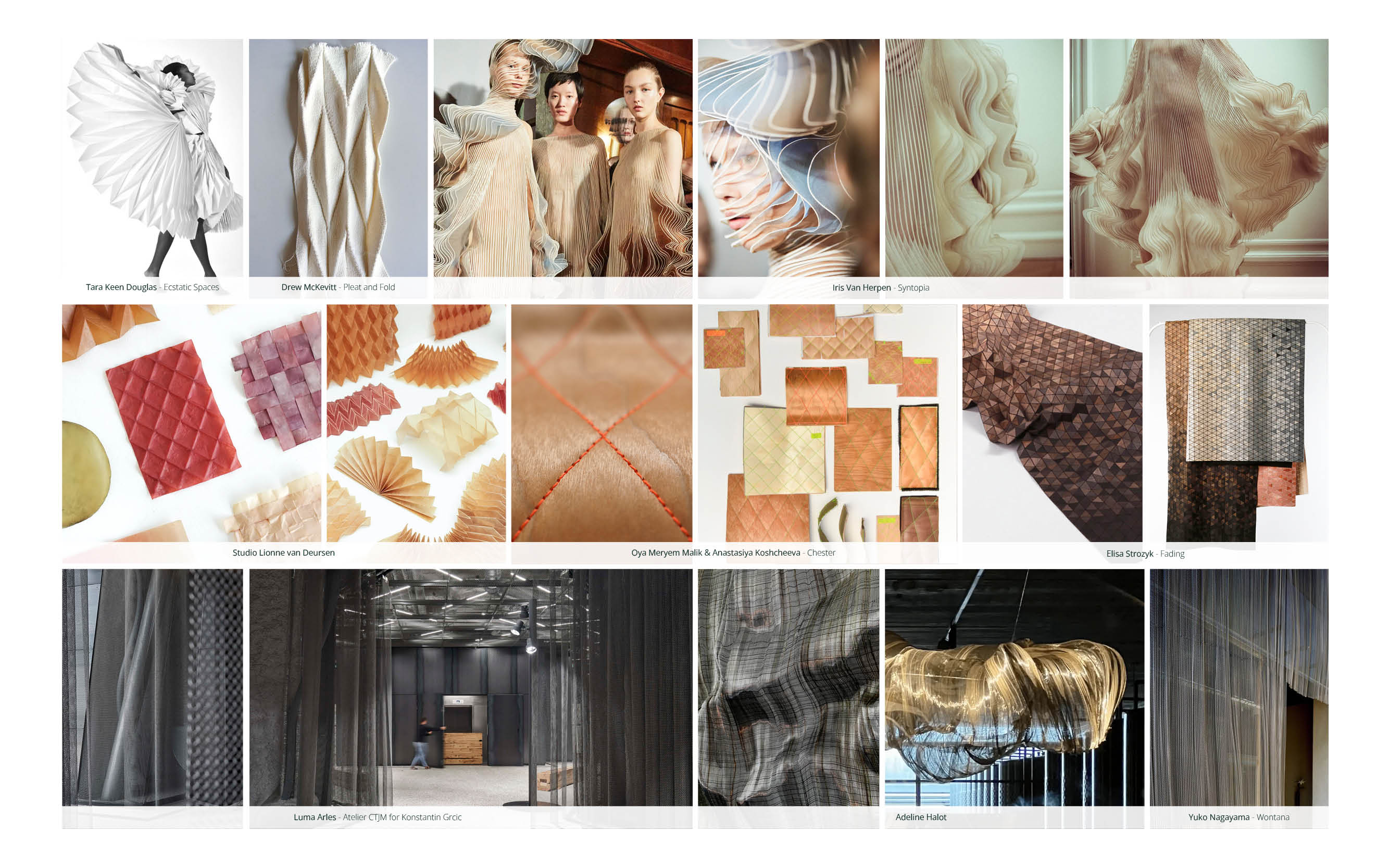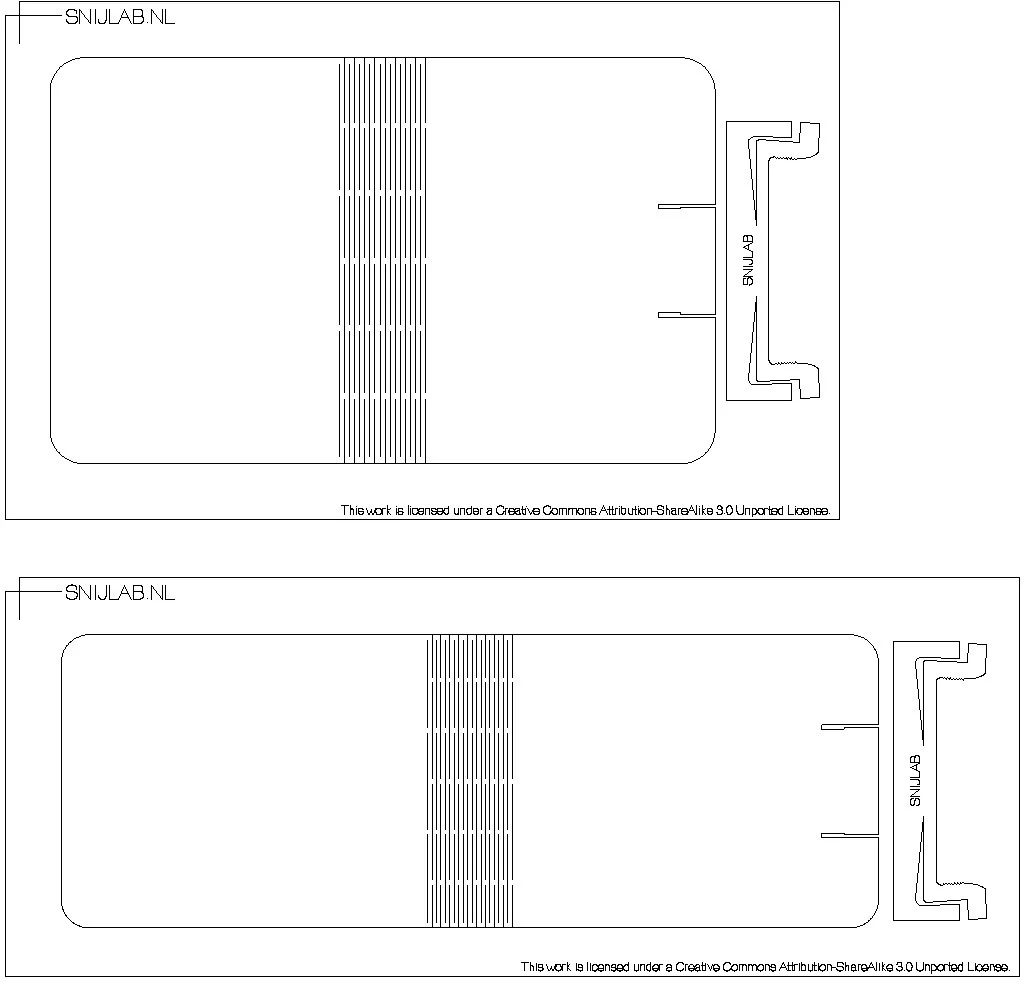11. Textile Scaffold¶

get inspired!
These references are available in a open Miro board with other weeks inspirations : INSPIRATIONS
Week 11 began with an inspiring lecture by Anastasia.
Researchs & Ideation¶
- I was interested in experimenting with 3 orientations as part of this week: the flexibility of rigid materials / the principles of woodskins; folding fabric and coating it (with wax or with PLA scraps from 3D printing process).

Process¶
- I started with flexible wood, using 3,8mm plywood and the laser cutter machine at Green Fabric. I used an existing cutting pattern found on Thingiverse, and kept only the central & folding area of the pattern, by removing the booklet outline on Illustrator.


- I had characterise this 3,8mm plywood along with other materials in week 03, and reused my matrixe to choose the cutting parameters here. Since these tests, I know that wood such as Plexiglas needs at least two laser cutting passes on the same line to be cut to its full thickness. Sometimes three if the cutting lines are far from each other. In that case, lines where close and I only cutted two times, with these parameters : Power 40% Speed 8mm/s.
Tip
GreenFabric workshop has a Beambox laser cutter, and use this program online to launch the cutting with WIFI. It is working better while downloading the Beambox application.



It would be interesting to test this kind of structure with a CNC machine at Green Fabric later too. To avoid burned outlines & work on thicker wood.

get inspired!
I had access to a very inspiring book related to Folding Techniques for Designers in our workshop.
Green Fabric is also proposing Origami sessions with the designer Dewi Brunet .
- After folding wood, I tried a folding technique found on the book, on paper & textile. Using soja wax to coat some cotton fabric. I wanted here to stiffen the fabric to keep the origami in shape.
Tip
I did that too during Covid to replace aluminium foil in my kitchen, inspired by the Beewrap technique.
A beewrap tutorial :


- Halfway between these beewraps and the fused deposition material printing on fabrics I explored in Week 07, I wondered whether it was possible to replace soya wax with PLA waste from 3D printing with the same ironing process. It seems a very interesting way of exploration. It might be combined with laser cutting too to create a kind of "PLA skin" instead of woodskins.




Tip
My transparent / virgin filament comes from Francofil's shop. They also proposed filament coming from wastes e.g mussels, beer & coffee.